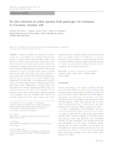Use este identificador para citar ou linkar para este item:
http://www.alice.cnptia.embrapa.br/alice/handle/doc/916487Registro completo de metadados
| Campo DC | Valor | Idioma |
|---|---|---|
| dc.contributor.author | FLORES, P. S. | pt_BR |
| dc.contributor.author | OTONI, W. C. | pt_BR |
| dc.contributor.author | DHINGRA, O. D. | pt_BR |
| dc.contributor.author | DINIZ, S. P. S. de S. | pt_BR |
| dc.contributor.author | SANTOS, T. M. dos | pt_BR |
| dc.contributor.author | BRUCKNER, C. H. | pt_BR |
| dc.date.accessioned | 2012-02-24T11:11:11Z | pt_BR |
| dc.date.available | 2012-02-24T11:11:11Z | pt_BR |
| dc.date.created | 2012-02-24 | pt_BR |
| dc.date.issued | 2012 | pt_BR |
| dc.identifier.citation | Plant Cell, Tissue and Organ Culture, Heidelberg, v. 108, n. 1, p. 37-45, Jan. 2012. | pt_BR |
| dc.identifier.issn | 0167-6857 (impresso) / 1573-5044 (online) | pt_BR |
| dc.identifier.uri | http://www.alice.cnptia.embrapa.br/alice/handle/doc/916487 | pt_BR |
| dc.description | Fusarium vascular wilt (caused by Fusarium oxysporum f. sp. passiflorae) is a limiting factor in the cultivation of yellow passion fruit (Passiflora edulis). Since there is no effective and economically viable control available, development of resistant or at least tolerant cultivars are in demand. A number of procedures have been used for the initial selection of plant genotypes resistant to various fungal pathogens by means of a fungal culture filtrate or purified toxin. In this study, seeds and in vitro-grown plantlets of passion fruit were screened with different concentrations of either Fusarium oxysporum f. sp. passiflorae (FOP) culture filtrate (0, 20, 30, 40 or 50%, v/v) or fusaric acid (0.10, 0.20, 0.30 or 0.40 mM) supplemented in Murashige and Skoog (MS) basal media. Subsequently, selected plants were inoculated with a conidial suspension of FOP to assess correlation between in vivo and in vitro responses. In vitro sensitivity to the selective agents and the resistance response to the pathogen were also compared. Root growth was markedly influenced by FA, culture filtrate, and conidial suspension culture treatments. Observations indicated that roots were primary targets for attack by F. oxysporum. Successful in vitro selection of resistant genotypes by both FA and culture filtrate treatments suggested that this strategy was viable for accelerating breeding of passion fruit for resistance to the Fusarium vascular wilt. | pt_BR |
| dc.language.iso | eng | eng |
| dc.rights | openAccess | eng |
| dc.subject | Maracujá amarelo | pt_BR |
| dc.subject | Yellow passion fruit | pt_BR |
| dc.subject | Maracuyá amarillo | pt_BR |
| dc.subject | Fusarium oxysporum f sp passiflorae | pt_BR |
| dc.subject | Fusariosis | pt_BR |
| dc.subject | Enfermedades y desórdenes de las plantas | pt_BR |
| dc.subject | Cultivo in vitro | pt_BR |
| dc.subject | Passiflora edulis f flavicarpa | pt_BR |
| dc.title | In vitro selection of yellow passion fruit genotypes for resistance to Fusarium vascular wilt. | pt_BR |
| dc.type | Artigo de periódico | pt_BR |
| dc.date.updated | 2019-01-10T11:11:11Z | pt_BR |
| dc.subject.thesagro | Doença de planta | pt_BR |
| dc.subject.thesagro | Maracujá Peroba | pt_BR |
| dc.subject.thesagro | Passiflora edulis flavicarpa | pt_BR |
| dc.subject.thesagro | Fungo | pt_BR |
| dc.subject.thesagro | Fusariose | pt_BR |
| dc.subject.thesagro | Seleção genótipa | pt_BR |
| dc.subject.thesagro | Cultura in vitro | pt_BR |
| dc.subject.thesagro | Variedade resistente | pt_BR |
| dc.subject.thesagro | Características Agronômicas | pt_BR |
| dc.subject.thesagro | Genótipo | pt_BR |
| dc.subject.nalthesaurus | Plant diseases and disorders | pt_BR |
| dc.subject.nalthesaurus | Fungi | pt_BR |
| dc.subject.nalthesaurus | Genotype | pt_BR |
| dc.subject.nalthesaurus | Agronomic traits | pt_BR |
| dc.subject.nalthesaurus | In vitro culture | pt_BR |
| riaa.ainfo.id | 916487 | pt_BR |
| riaa.ainfo.lastupdate | 2019-01-10 -02:00:00 | pt_BR |
| dc.identifier.doi | 10.1007/s11240-011-0009-5 | pt_BR |
| dc.contributor.institution | PATRICIA SILVA FLORES, CPAF-AC; WAGNER CAMPOS OTONI, UFV; ONKAR DEV DHINGRA, UFV; SÉRGIO PAULO SEVERO DE SOUZA DINIZ, UEM; TELMA MIRANDA DOS SANTOS; CLAUDIO HORST BRUCKNER. | pt_BR |
| Aparece nas coleções: | Artigo em periódico indexado (CPAF-AC)  | |
Arquivos associados a este item:
| Arquivo | Descrição | Tamanho | Formato | |
|---|---|---|---|---|
| 24136.pdf | 434,24 kB | Adobe PDF |  Visualizar/Abrir |









